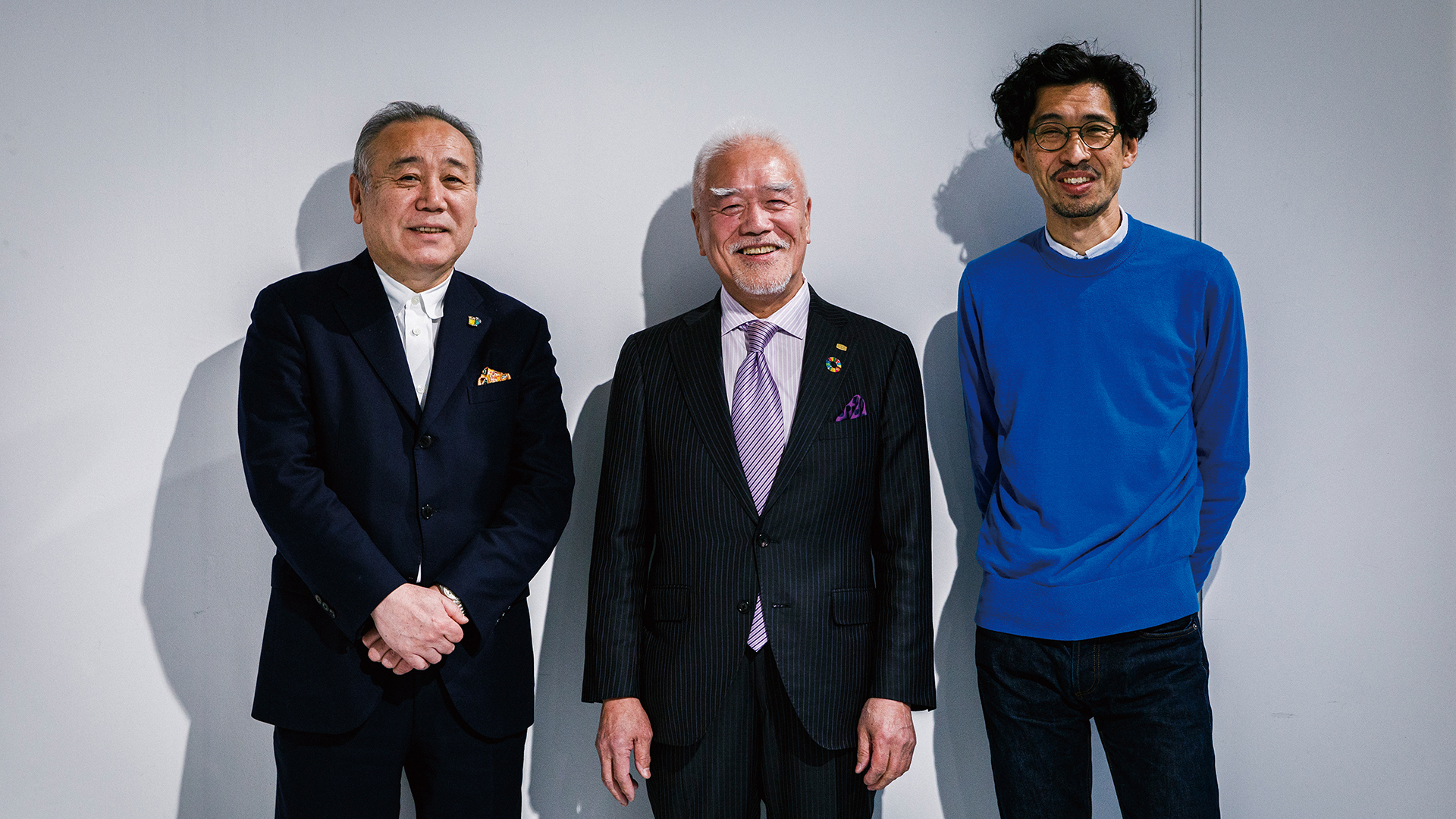
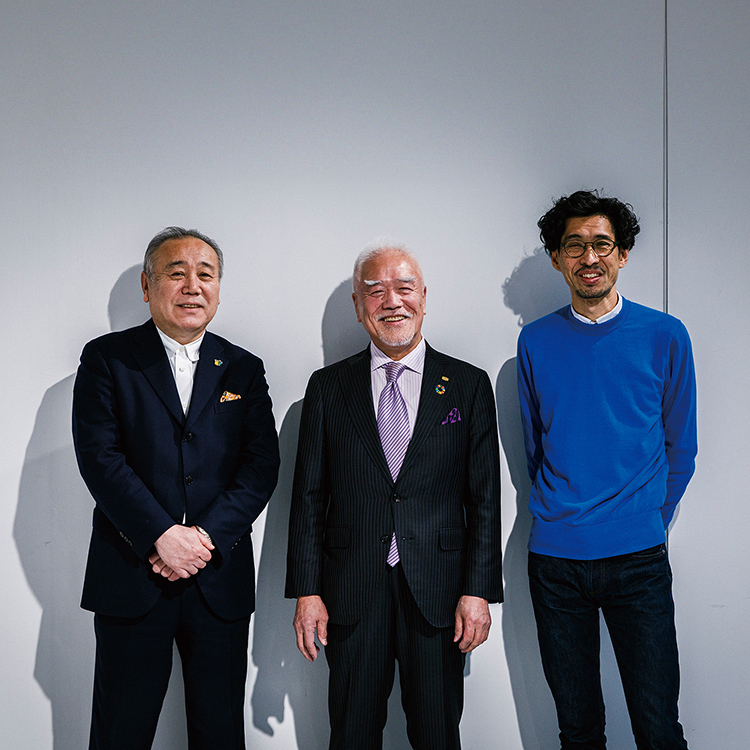


Junzo Tateno
CEO of UNION Corporation
Born in 1947, Junzo Tateno graduated from the Faculty of Law at Konan University (Kobe, Japan) in 1970
and entered Aoki Construction that same year. He joined UNION in 1973 and became CEO and President in 1990.
He serves as Chairman of the Union Foundation for Ergodesign Culture, a Public Interest Incorporated Foundation,
and the Osaka Industrial Bureau. He is also Vice Chairman of the Osaka Chamber of Commerce and Industry.
Nobuyuki Obta
Born in 1953, Nobuyuki Ohta traveled to New York after graduating from Meiji University' s Department of Business Administration. He spent eight years working as an intermediary between the American and Japanese fashion industries, serving in a variety of roles such as special correspondent to the Senken Shimbun newspaper, coordinator at Barneys New York, and marketing director for the National Association of Men's Sportswear Buyers. In 1985, he established the Council of Fashion Designers, Tokyo (CFD) and acted as its secretary-general. Ohta initiated the Tokyo Collection. He became president and CEO of ISSEY MIYAKE INC. in 2000 and, in 2006, served as an executive committee member for Japan Fashion Week (JFW). He helps manage the Tokyo Collection as well as actively supports up-and-coming designers. In 2013, he became president and CEO of Cool Japan Fund Inc. and, in 2018 after leaving this post, established MD-03 Inc. To this day, he is still a driving force in Japan's fashion industry.
Hikaru Matsumura
Hikaru Matsumura is a Japanese fashion and product designer. After graduating from Musashino Art University and Ecole de la Chambre Syndicale de la Couture Parisienne in Paris, he entered MIYAKE DESIGN STUDIO in 1993. In 1998, he helped found ISSEY MIYAKE's Good Goods brand, and in 2005, he established HIKARU MATSUMURA DESIGN. He belonged to BAO BAO ISSEY MIYAKE from 2008, after which he served in several roles, such as creative director and designer for the product brand 52 BY HIKARUMAT-SUMURA and designer for the men's bag brand TOMOE. Matsumura is involved in a wide range of design projects that cut across the fields of fashion and product design.
11
TATENO
Last year, I visited Switzerland’s Vitra Campus. The production plant there is incredible. That site has given rise to countless famous architects. At UNION, we want to do something like that in the future as well.
OOTA
It’s really amazing, isn’t it? I also went there last year. When I mentioned this to some of the staff at Umeda’s Knowledge Capital, they started talking about going right away.
TATENO
That campus features the first overseas project undertaken by Mr. Ando (Tadao Ando) as well as works by Zaha Hadid. All of the architectural works were developed into various facilities. It’s truly an impressive undertaking. It’s also exceptional in terms of the construction methods employed. The idea to build a 20-meter acrylic arch was really interesting.
OOTA
Vitra’s chair collection is something special as well. It’s a remarkable lineup that makes you want to take out each one and look at it individually.
TATENO
They really worked hard on those displays. I heard they spent a substantial sum of money on that section alone.
OOTA
I heard that, too.
TATENO
You’ve led a dazzling career in the fashion industry. Is there any famous facility in Japan where you can learn about the history of fashion like at Vitra?
OOTA
There’s really no facility in Japan like Vitra. That said, Wacoal has started collecting various Japanese works of fashion. The Kyoto Costume Institute (KCI), which was started by Wacoal about 40 years ago, carries all types of French haute couture from around the time of the French Revolution. In that field alone, they must have the biggest collection in the world.
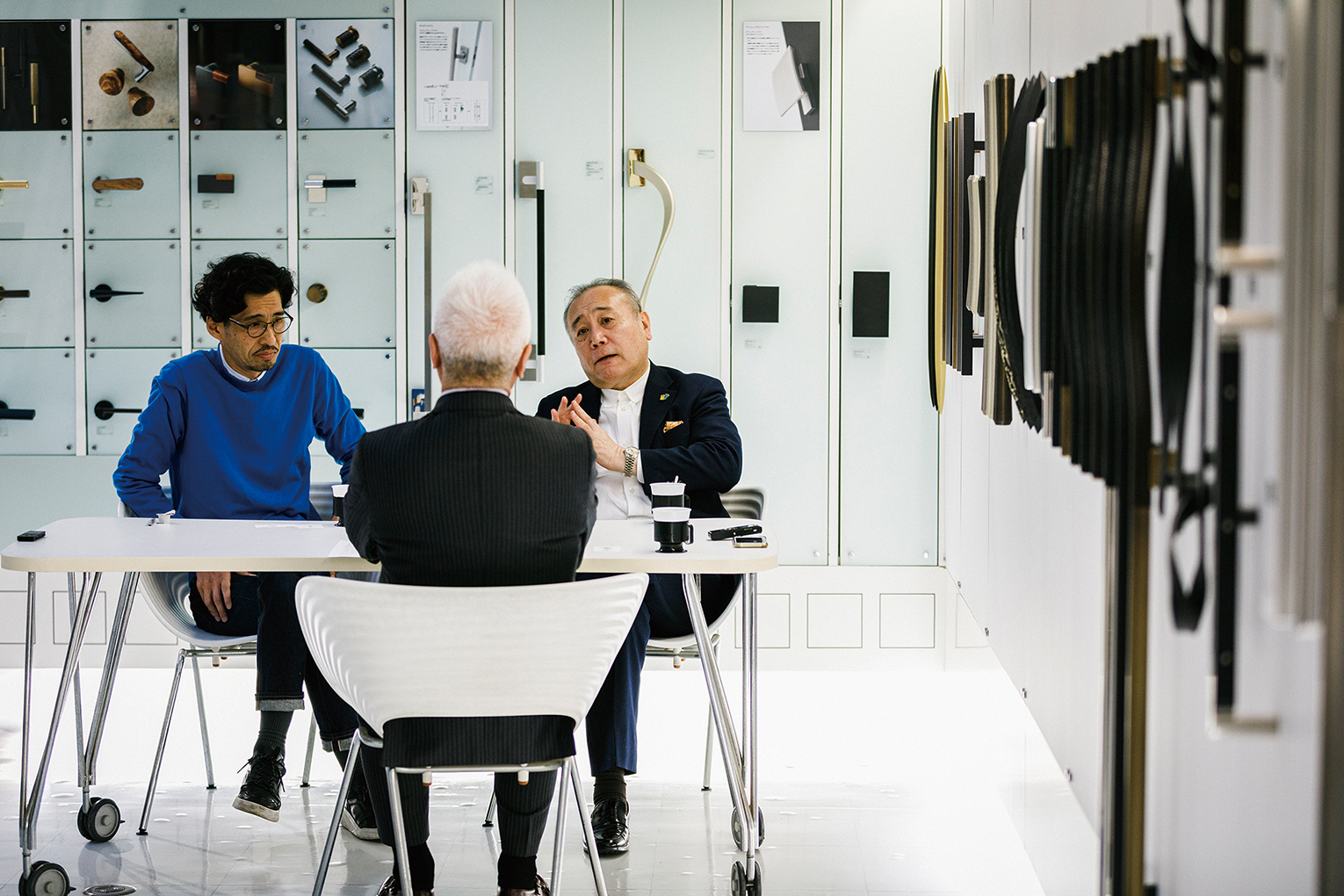
TATENO
Is that right?
OOTA
Apparently, the Louvre Museum has even asked the institute to loan them documents and materials. There just aren’t that many documents left in France anymore.
TATENO
Now, that is impressive.
OOTA
Now, that is impressive.
TATENO
Is that so? *Laughs.* I’ve heard that the world of fashion changed quite a bit from that point onward.
OOTA
That’s right. Clothes as decoration began to slowly disappear. One insight that can be gleaned from this is the increased activity of women in the world. And the French Revolution, which was the catalyst for this change, can be researched through this very collection that Wacoal possesses.
TATENO
Mr. Matsumura, similar to Mr. Ohta, you’ve built quite an extensive portfolio for yourself in the fashion industry. And you’re always taking on new challenges. When I look at the products you’ve worked on, there seems to be an intimate interplay between the materials and the design. What are your thoughts on this?
MATSUMURA
For me, I’m always looking to work with a new material that isn’t used by any other brand. I make it a point to adopt materials that aren’t already currently in use.
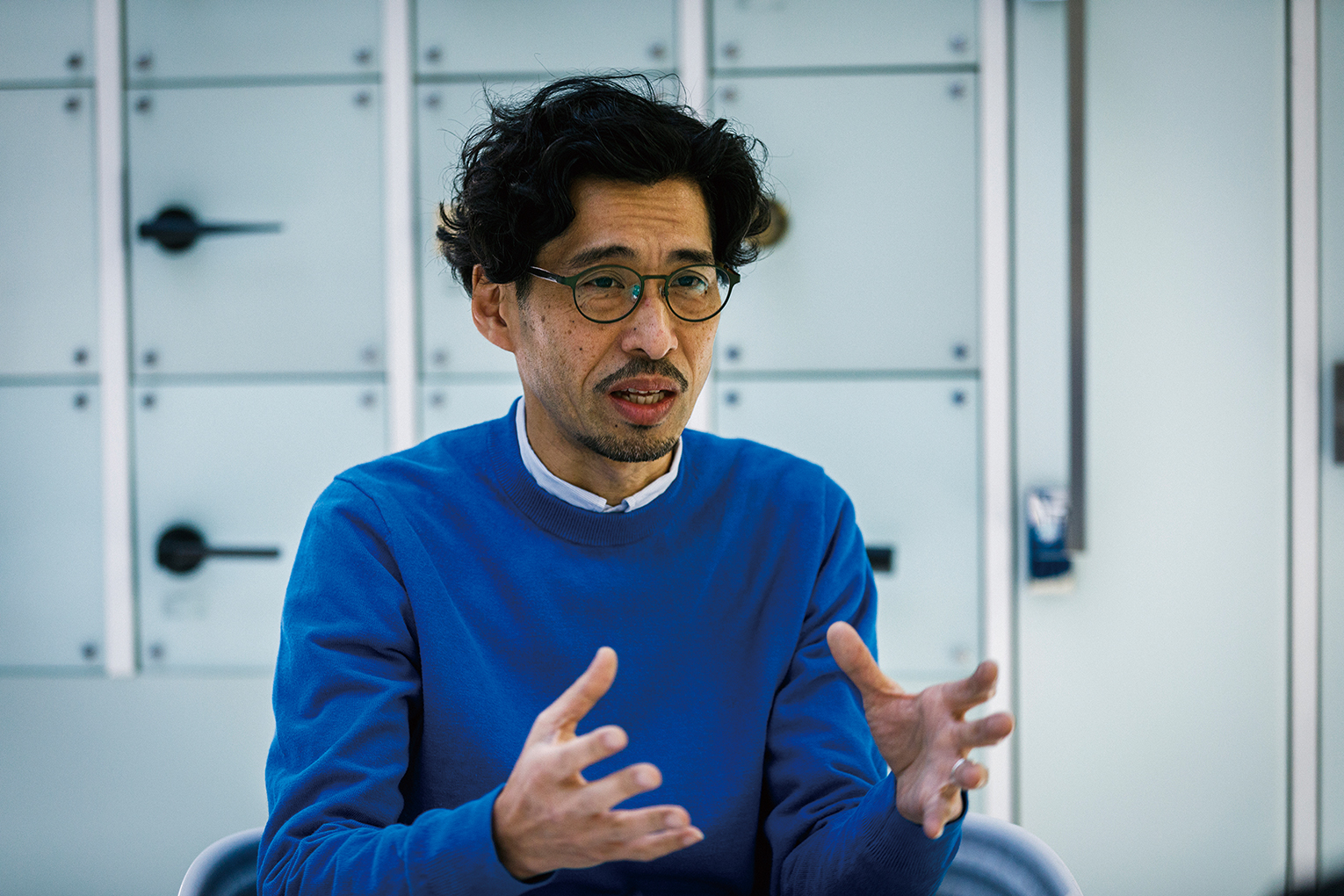
TATENO
The products in my industry have evolved to take on ever simpler forms. I, myself, instruct our employees to focus on “making things simpler.” There’s a trend to incorporate something new into the finish of a product rather than its design. For example, creating a new color that hasn’t existed before or developing a more pristine plated finish. Is this different in the world of fashion?
MATSUMURA
Not at all. Fashion is the same. Testing the limits of how much you can manipulate a form is a thing of the past. This has led us to see what kind of unique materials we can use for a product’s raw ingredients. That is the most important place to set oneself apart.
TATENO
I see.
MATSUMURA
If you’re looking for a good fabric, Italy is the best. Italian artisans are truly spectacular. That said, while it’s easy to get them to make something of quality, you have to really touch their heartstrings for them to make something new. Otherwise, they’ll turn you down. Japanese artisans, on the other hand, are up for taking on the challenge even if it’s difficult. Of course, they make mistakes, but often they create something that surpasses your expectations. That is Japan. Today, a majority of the brands in Europe use Japan-made materials. Japan is the only place that can take a material like polyester and create a level of luxury that leaves the beholder amazed.
TATENO
People in the fashion industry are worried about the pitfalls of only making cheap items, aren’t they?
MATSUMURA
That’s right. One more example is with denim. If you look around the world at top quality denim, it’s produced in Japan. This is thanks both to Japan’s unique technical tradition of indigo dyeing as well as to Japanese artisans’ undying spirit for taking on interesting challenges. Italian artisans will make really quality stuff; they just don’t want to update something if it’s fine as it is. This is because the product is already in its final form. If you tell them you want to take their finished product and bleach it or shrink it, they look at you like you’re crazy. *Laughs.* I imagine it’s the same for industries that deal in UNION and other companies’ metal products. It’s about how you can tinker with a product and create additional value. For this, what’s important is the quality of the material rather than its shape.
TATENO
Exactly. When we exhibit our products overseas, people are often stunned by what is possible through Japanese technology. Still, that doesn’t guarantee something will sell. The average consumer’s honest opinion is that the price is too high. Uniqlo is one example of a company that uses quality materials, while keeping costs low. They have the pride of the craftsman, but are still able to meet a wide array of demands. I feel we have to start taking a similar approach to our work.
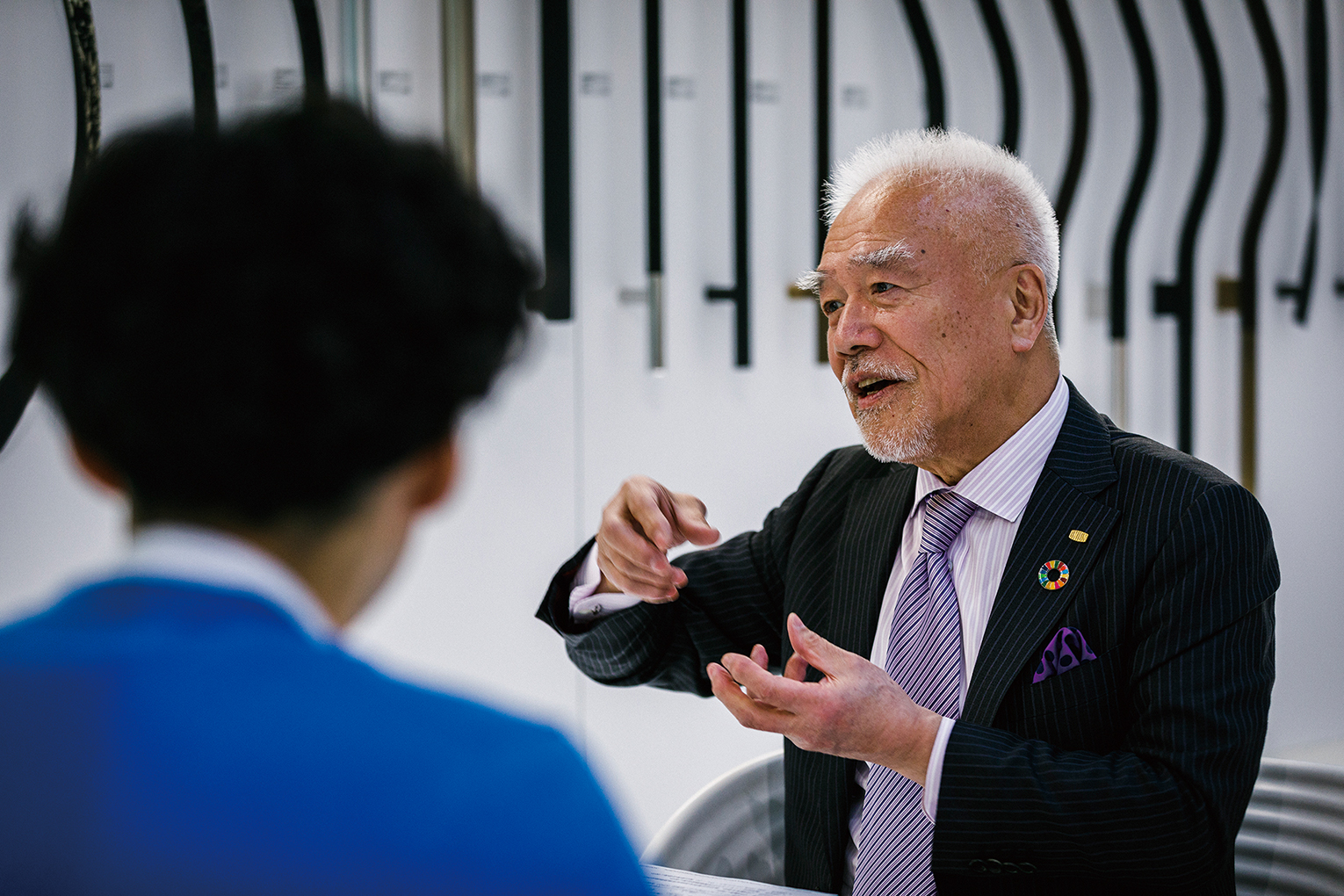
MATSUMURA
It’s natural for something to cost a premium when a lot of time, effort and trial and error have gone into making it. This is an undeniable fact. If you think something is too expensive, then don’t buy it. That’s how I feel. Whether I can say this directly to a person is another matter though. It’s probably best not to be so straightforward. *Laughs.*
TATENO
I wish I could be that to the point. *Laughs.* What standards do you use when setting your prices?
MATSUMURA
I know I just said “if you think something is too expensive, then don’t buy it,” but I don’t have the courage to say that either. *Laughs.*
TATENO
*Laughs.*
MATSUMURA
So I actually try to keep my prices within an acceptable range. To keep prices reasonable, I work with the actual production facilities to keep costs low. This actually provides a lot of meaning to my work as well.
OOTA
ISSEY MIYAKE, where Matsumura and I both previously worked, spends a lot of money on getting their designers and atelier residents to go out to factories. I realized this when I became a company president. That is part of ISSEY MIYAKE’s corporate culture.
TATENO
Designers are instructed to go and see the actual site of production.
OOTA
That’s right. This way they talk directly with the artisans to see what is possible. Matsumura was raised in an environment like this. This belief was in the DNA of Issey Miyake from the moment he founded the company. I’m sure of it.
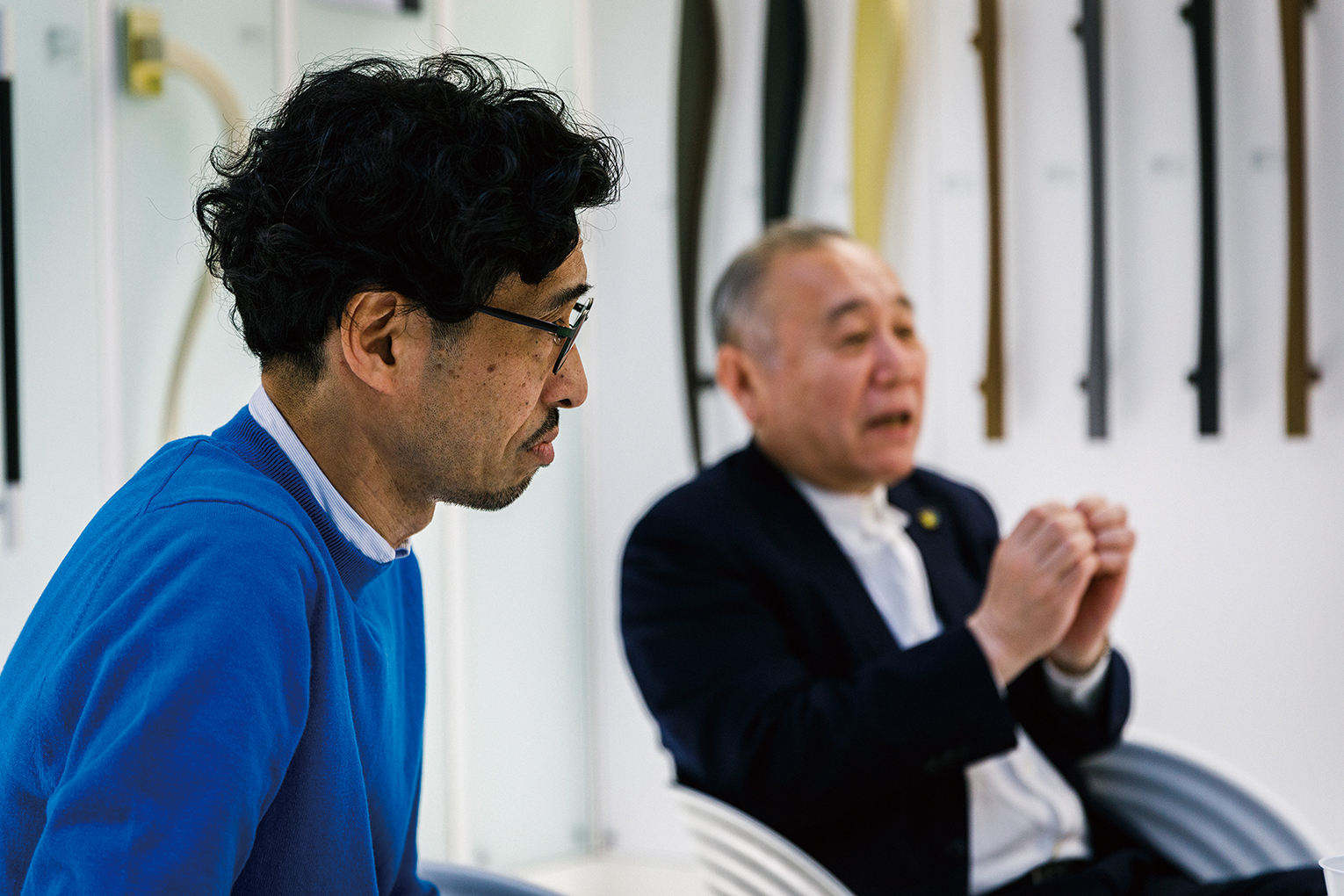
MATSUMURA
The factories with ideas and technology are the very ones that don’t want to show their internal operations. If you ask to take a look inside, they turn you down, saying that they’ve never shown that to anyone before. This is the very reason that people like us want to take a look inside; no one has never seen it before.
TATENO
That’s only natural. New ideas are never borne frome something everyone has seen.
OOTA
Take for example the BAO BAO ISSEY MIYAKE bag with its triangular parts that were thought up by Matsumura. The factory that produced that wasn’t even a bag manufacturer.
MATSUMURA
That’s right. That was a badge factory.
OOTA
Matsumura visited a factory that manufactured badges and emblems for sports uniforms and thought, “we might be able to use this technology ourselves.”
TATENO
It’s an incredibly popular brand today, isn’t it?
OOTA
I believe it was Mr. Miyake’s policy from the start to have designers go down to the factories and interact directly with the artisans to come up with new ideas. There are no other companies that send employees out from the moment they join like ISSEY MIYAKE does. It’s unique to the company.
TATENO
They go to factories all around the world!? Now that’s impressive.
OOTA
Yes but Mr. Miyake was a stickler for products being “made in Japan.” He really worked to take care of Japanese artisans.
TATENO
We also work as a team with Japanese artisans who specialize in traditional crafts for our production.
OOTA
I’m involved in the Cool Japan initiative, and we encounter a wide range of factories all across Japan. One thing you notice the moment you enter a factory is that places with young workers are always lively and upbeat.
TATENO
Is that so?
OOTA
When I see a 20 year old novice artisan working alongside an 80 year old veteran, I know that the company is all right. If you go to Gyokusendo, where they make kettles by pounding single sheets of copper, or to the casting manufacturer Nousake in Takaoka City in Toyama Prefecture, you’ll see young artisans just out of art school working there. And right next to them, you’ll find veteran craftsmen working and providing instruction.
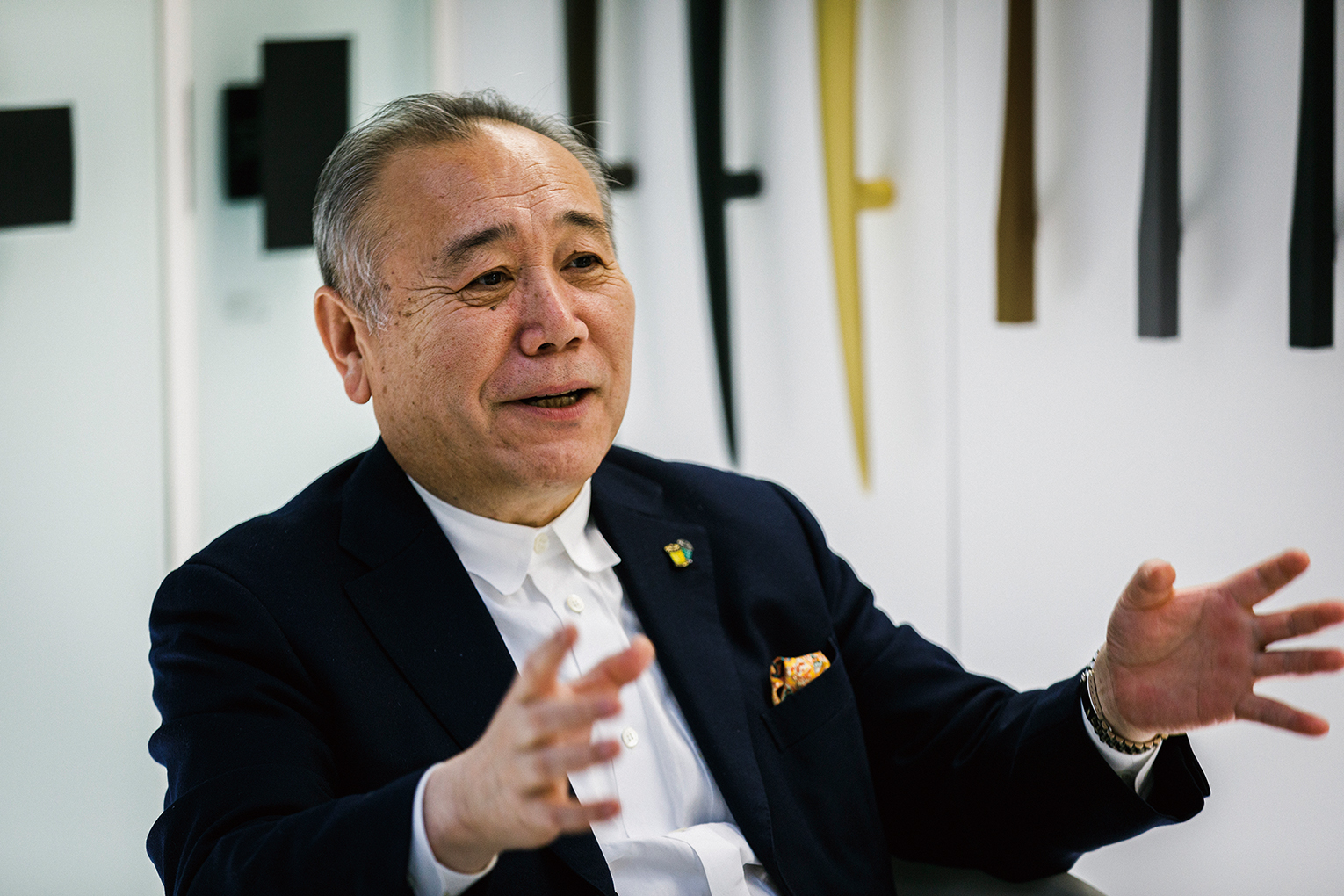
TATENO
I suspect that the reason they are able to attract young people is because there are actually jobs in that industry. Without jobs, industries begin to decline. This is only natural. This is why it is essential that Japan as a whole creates new jobs in order to ensure that traditions live on and technologies continue to grow. Those are my thoughts. This can be said for the fashion industry as well. We need to take care of our artisans across industry lines. If we don’t, I’m afraid that culture will begin to disappear over time.
OOTA
You said it. This is why ISSEY MIYAKE continually contracts the same factories for work. In 20 years, that factory might just become the leader of its industry. The trick is to make sure the factory doesn’t disappear in a flash of success.
TATENO
That’s amazing. At UNION, we don’t have our own factories; we simply design the products and get the factories to make them for us to sell. I think most companies take this same approach, but recently, it has become difficult to keep requesting work from factories. This is something we have to think about.
OOTA
We must constantly update our technologies using a variety of different materials. If we don’t, we won’t be able to create new jobs. What’s more, if the products we make are not well received, then we lose work as well. It’s clear that we have to continue putting in effort, and that society as a whole has to create an environment where artisans can continue to thrive at their work.
TATENO
You’ve hit the nail on the head.
OOTA
I’m a big fan of Japanese sake. The artisan in charge of brewing sake is known as “Toji” in Japanese or “head brewer” in English. The sake brewery Dassai got rid of their head brewer and were still successful, but there are still numerous toji around Japan. We have to create an environment that allows these head brewers to continue doing their work. As Japan’s population decreases, we must start thinking about exporting these artisans overseas. If we do export them, however, it has to be at a premium price.
TATENO
That’s the way it should be. This group of artisans known collectively as “Toji” is truly one of a kind, globally speaking.
OOTA
If you want to sell sake at a high price, you might want to rethink the design for the bottle it comes in.
TATENO
Good point. It might be worth abandoning the classic 1.8l bottle used in Japan.
OOTA
Yes. Adopting a brand new design similar to a bottle of Dom Pérignon could be interesting. I’m sure it would be well received abroad.
TATENO
Even drinking Japanese sake out of a champagne glass completely changes the flavor and experience, doesn’t it?
OOTA
Simply put, people want the total experience to be thought out. There was a famous executive at a champagne company who asked a Japanese sake producer why they set the prices so low when they could easily sell the product for more. He said, “no other countries in the world can make Japanese sake, so you should reconsider your pricing.”
TATENO
Compared to whiskey and other western spirits, Japanese sake can be enjoyed at a really favorable price. Even the most expensive types can be bought for around 10,000 yen. The bang for your buck you get with sake is just too good.
OOTA
Remember how inspections at the Ministry of Foreign Affairs used to assign a rank of 1 or 2, for products? It’s like a carry over from that system. Pricing standards haven’t changed in all these years.
TATENO
For Japanese sake, there’s a story behind the brewing process. The head brewer polishes and prepares the rice; they put a lot of time and effort into creating the final product. If more people knew about what goes into making a bottle of Japanese sake, I think it’s value would go up.
OOTA
Demand for sake appears to be rising in today’s world. I heard this from a sommelier in Dubai, but there is an aged sake made by a brewery in the northeast region of Japan that sells for 300,000 yen a bottle.
TATENO
Demand for sake appears to be rising in today’s world. I heard this from a sommelier in Dubai, but there is an aged sake made by a brewery in the northeast region of Japan that sells for 300,000 yen a bottle.
OOTA
That’s great. It would be wonderful to see your products at MAISON & OBJET. Hopefully, after comparing the quality of an item with other products, people will recognize that while something may be expensive, it does offer undeniable value.
MATSUMURA
It often comes down to how much money a company can spend on branding. Japan’s history of craftsmanship was built up in a rather unique way, which makes dynamic price schemes harder to pull off.
TATENO
How did Issey Miyake work to establish his brand overseas?
OOTA
Issey Miyake studied abroad in France when he was younger and, at the time, belonged to a famous design house there. On his way back to Japan, he traveled through America. He enjoyed a lot of unique experiences when he was overseas, and I believe he intended to make an international brand for himself from the very beginning.
TATENO
Is that right? At the time, Japanese designers weren’t really accepted on the international scene, if I recall correctly.
OOTA
It must have been a difficult period to live through. I don’t think anyone imagined that Americans and Europeans would wear western clothes made by East Asians. But it wasn’t like they were making kimono. The stereotypes of Japan’s clothing culture were quite engrained, so no matter what type of western clothes Japanese made, the result was bound to be different from clothing made by westerners. But that slight difference carried with it significant value. Mr. Miyake often said that western clothes were but a single piece of cloth. Namely, it wasn’t necessary to make clothes according to the shape of a person’s body. If the sleeves were too long, you could roll them up. If the waist was too big, you could put on a belt. This way of thinking didn’t exist in the past.
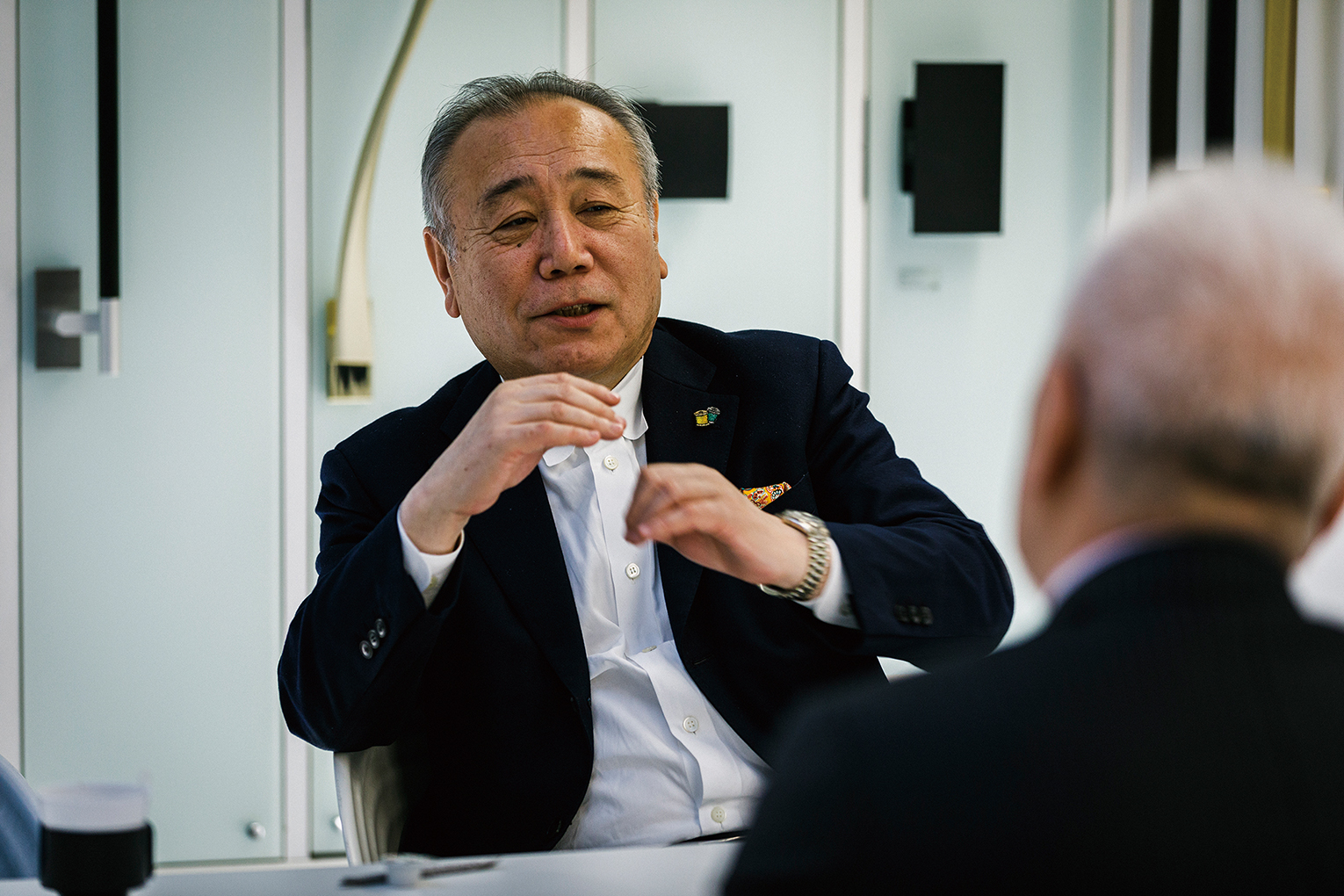
TATENO
It became accepted.
OOTA
That’s right. This is where Issey Miyake had a mysterious charm about him. He didn’t set out to make clothes in a Japanese style, but for foreigners there was something inexplicably Japanese about the clothes he made.
TATENO
This is what you meant by the value in providing something slightly different.
OOTA
Yes. Making something that couldn’t be made by people in other countries had a lot of value.
TATENO
So does that mean that the bag created by Mr. Matsumura was also seen to provide this type of value?
MATSUMURA
What Mr. Miyake meant by a single piece of cloth was that we should try to use a square piece of fabric so as to eliminate as much waste as possible. That means, you had to think of a way to make clothes that maintained as much of the original square shape as possible without making too many cuts. I think the similarity lies in the challenge of trying to make a three-dimensional form out of a flat surface.
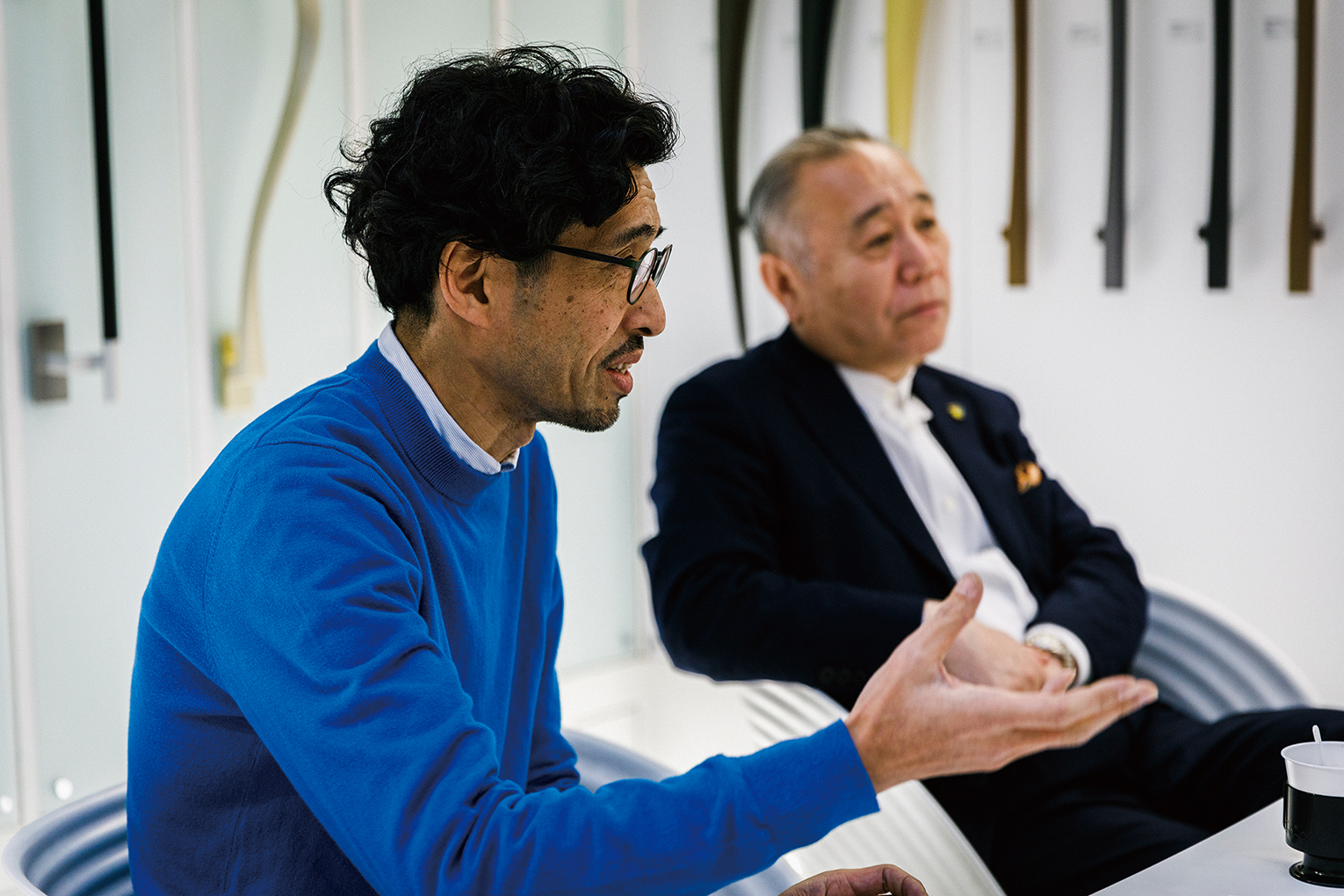
OOTA
This thought process of creating something three dimensional from a flat surface is not something that exists in the West I believe.
TATENO
Mr. Ando and Mr. Miyake both worked on 21_21 DESIGN SIGHT, didn’t they?
OOTA
Yes. That architectural work was inspired by Mr. Miyake’s single piece of cloth that we were just discussing. Mr. Ando did the design for that. The unique roof of that structure really has a lot to say.
TATENO
It seems today’s fashion industry is entirely devoted to a B2C business model. What do you think is the background for this trend?
MATSUMURA
I think the ideal form for up-and-coming businesses is one where the producers and consumers act as opposite sides of the same coin.
TATENO
We live in an age where end users do business amongst themselves using their smartphones, don’t we?
OOTA
For us, the ultimate B2C business is one where the producer adds value to their own products and delivers it directly to the consumer without any middlemen. An example of this would be a farmer growing vegetables and then preparing them as a meal to provide to the customer themselves. There’s no wholesale market or agricultural cooperative in between.
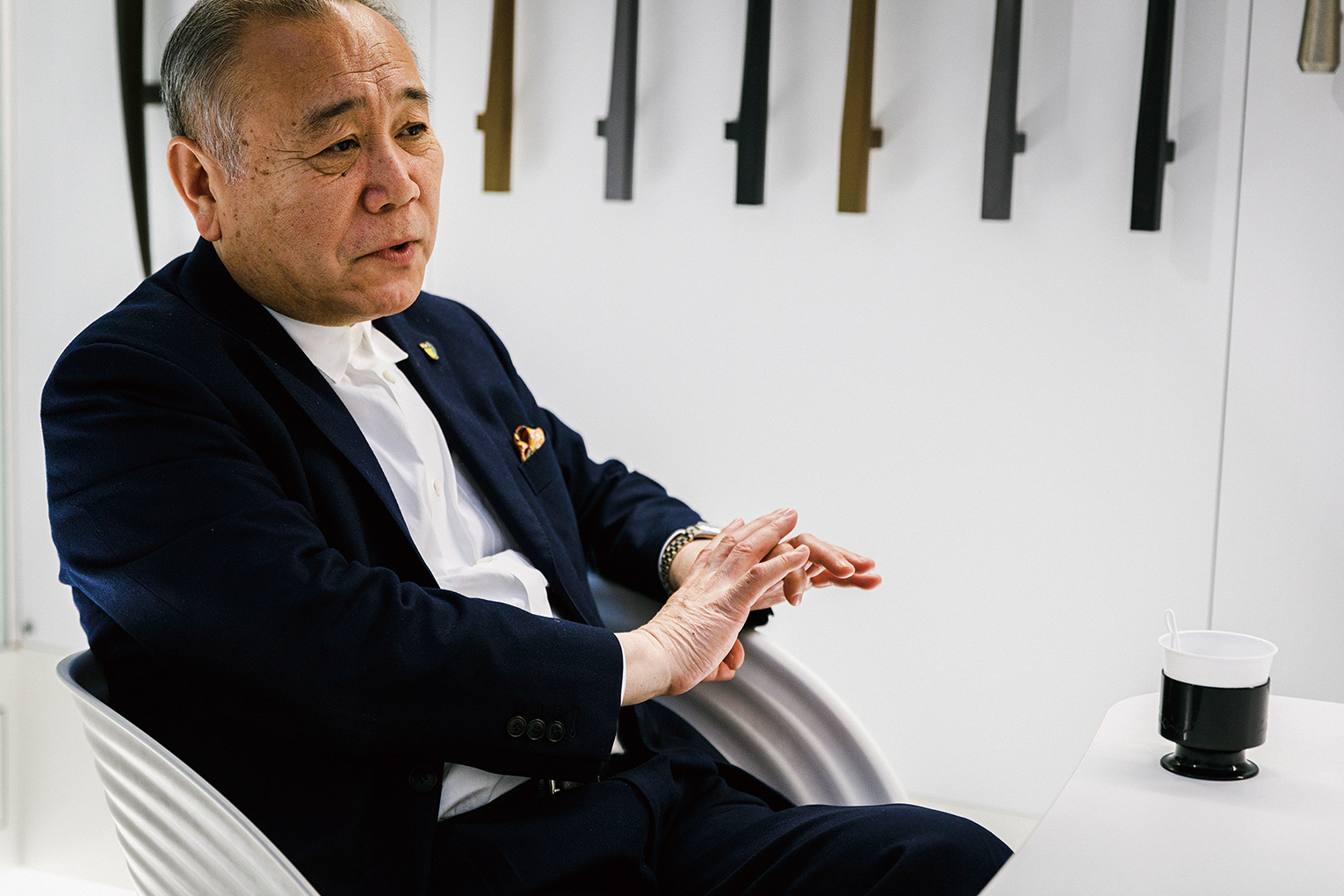
TATENO
But if you set up a business model like that, there would surely be a lot of blowback from the industry, no? I feel the challenge would be overcoming this barrier.
OOTA
Hmm. I think the industry has no way to fight back against this.
TATENO
Oh really. What do you mean?
OOTA
I mean they can’t fight against what the consumer wants.
TATENO
For the fashion industry, this would mean that wholesalers would eventually have to stop selling products, if I’m not mistaken.
OOTA
Exactly. Wholesalers and retailers would eventually disappear. This is why I think department stores are unnecessary.
TATENO
Won’t this create a lot of opposition though?
OOTA
I think we are entering an age where you can no longer fight off prevailing trends. Today, people working in positions that are becoming obsolete need to think about how to pivot and find new work rather than about losing their job. This is what is essential to focus on.
TATENO
I see.
OOTA
There are no more than 100 employees working at the Daimaru department store in Tokyo’s Yaesu district. Looking at business models up until now, a department store of that size would have had several hundred employees working at it. This is what is changing today. Putting aside whether this is good or bad, it is certainly a new direction. Vegetables and clothes are also undergoing this same transformation. When all is said and done, the people doing the actual production are in the strongest position. Up until today, the profit margin of producers was small and that of the middlemen was large. Businesses have to think about how to increase the margins of the producer while successfully passing off products directly to the customer.

MATSUMURA
In the fashion industry, it was normal in the past to sell the clothes that you made yourselves. The designer being involved in the whole process from manufacturing to sale was common. I, myself, don’t want my work to finish with the completed design. I would like to be involved until the end when the product reaches the customer’s hands. That’s why I think it’s ideal for there to be as little distance as possible between the producer and the consumer.
TATENO
Mr. Matsumura, you exhibited on Koto-dori in Aoyama, am I right? That is the perfect location for selling products like yours, don’t you think?
MATSUMURA
Since the spot is far from the station and rather inconvenient to get to, it was important to create a shop that would make people want to take the journey out there. It was also one more way to express myself as a designer. I believe it is essential to create something interesting and entertaining that will leave the visitor happy they made the effort to stop by. Department stores are becoming less and less necessary, but the charm of a space is still key to its success. The last places to remain standing will be the ones that people have fun visiting.

OOTA
What your saying is that just selling products isn’t enough. You need to sell the experience of a place and the time spent there, in addition to merchandise. If the customer enjoys themselves thanks to this, then that is enough. Mr. Tateno, do you know about EATALY?
TATENO
I’ve heard of it before.
OOTA
EATALY is a general food market that originated in Italy, where you can shop for ingredients and then eat them at the restaurants adjoining the market. What’s more, sometimes they will teach you how to make a certain dish. They provide customers with an experience that allows them to “shop, eat, and learn.”
TATENO
That’s great.
OOTA
They don’t just line up products to sell, which is why these markets are packed with people everyday.
TATENO
I see. This is what you meant by having to change the way we sell things.
OOTA
Yes. The point is simply not to line a shelf with tomato sauce, but to offer a restaurant next door where you can eat a delicious meal made from the tomato sauce you bought. If you enjoyed the meal, then you can buy the tomato sauce. That’s their stance. Today, you can buy anything you want online. Shops need to find a way to communicate their own unique charm. Take cosmetics, for example. It’s not enough to be able to buy them online. A shop can increase its value by providing a “how to” from trained cosmetic professionals alongside the products. As long as there are customers looking for this service, that’s sufficient. But, if customers learn how to use a cosmetic and proceed to go buy it online, then the shop becomes obsolete. This is where thinking about your business becomes important.
TATENO
It’s really difficult, isn’t it? Products are often cheaper online.
OOTA
Exactly. This is why I think new cooperative partnerships and collaborations will become more and more important. For example, instead of just selling the tomato sauce you make, why not link up with a famous chef with a unique background and develop a completely new dish using the tomato sauce that is only on sale for a limited time? It’s essential to actively explore new business opportunities that bring joy to your customers through collaborations like this. The same can be said for interior decorative materials like the ones produced by UNION. I feel the possibilities are endless.
TATENO
As you’ve said, it might be necessary for us to employ some new and innovative ideas in order to get our products added to a range of different spaces. Indeed, it might be interesting to do some kind of collaboration with the fashion world.
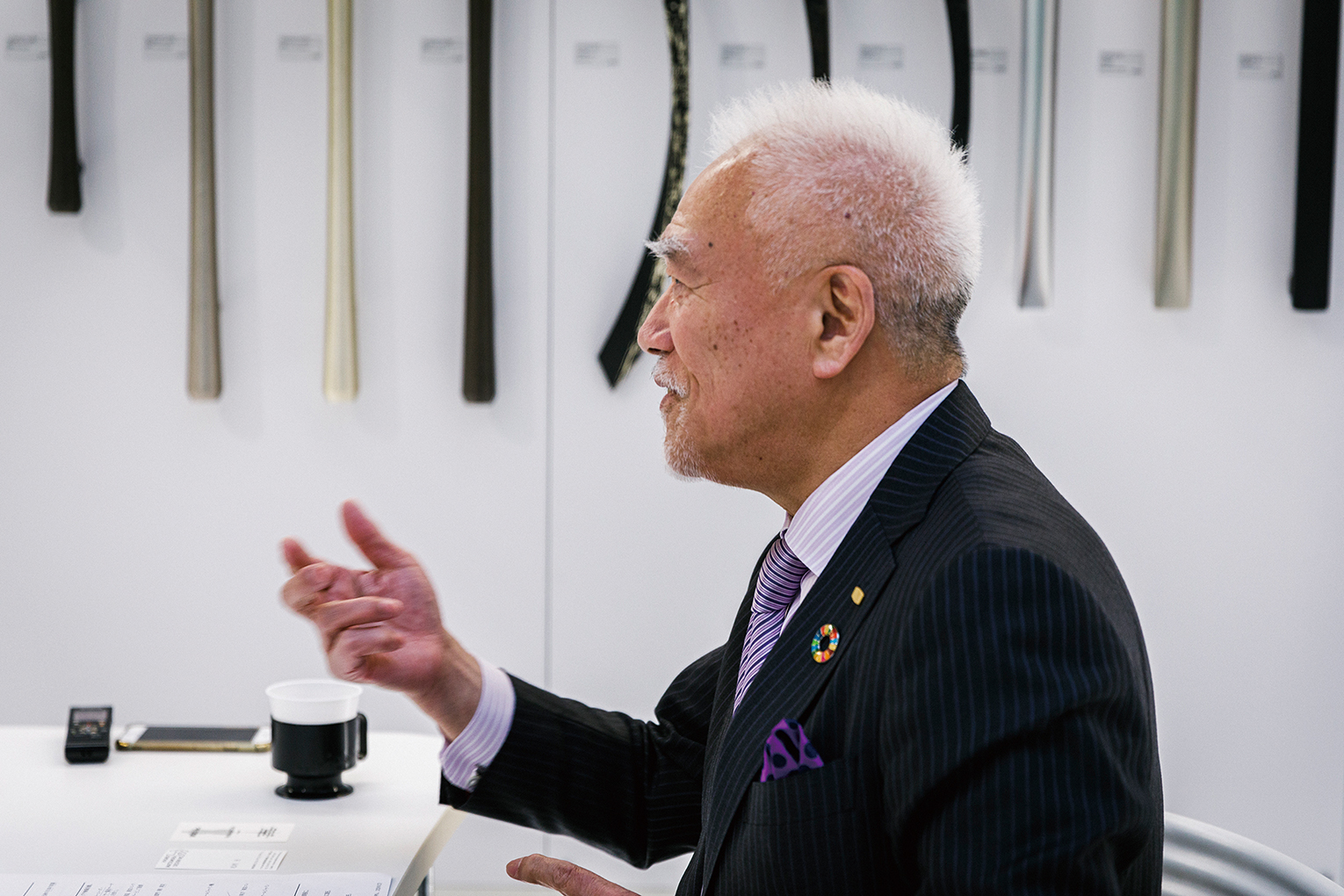
OOTA
The bag that I am using comes equipped with metal fittings, so there definitely might be room for collaboration. The bag industry has been in decline for some time, and many manufacturers can’t make even a single metal fitting any more. It’s becoming more and more difficult to polish these fittings as well, so if we decide to make a quality metal fitting we have to go looking for specialists in other fields. These days we go to Tsubamejo in Niigata to get our fittings polished by someone in an entirely different industry, so I would be really interested to find out more about UNION’s metal fittings.
TATENO
Just say the word, and we will be happy to take up the challenge! *Laughs.*
OOTA
If you could employ a technology to create a new material or get someone in an entirely different field to use your door handles for a novel application, I think you could greatly increase what is possible for your business, supposing these kinds of fanciful ideas were communicated to the end user.
TATENO
It could be interesting to approach a completely different industry with an idea that uses our technology.
OOTA
You could get an artist to create a decorative work using materials from your handles. If a creative person used an interesting material to make something, it could be enough just to put the object on display. It might not become your main business, but it could provide the hint you were looking for to create something new.
TATENO
If we could get an interesting company involved, that would be great.
OOTA
I predict that Japanese automobile manufacturers will enter a decline in the coming years. The reason simply being that the cars they make don’t look cool. In terms of performance, all industries have managed to surpass a certain standard level.
TATENO
That’s true. Their cars don’t really stand out.
OOTA
Exactly. That’s why I would like to see them revisit the very concept of the car. It’s not enough to just have low emissions and high fuel efficiency. The car needs to be fun. It needs to look cool and make you want to brag about it. It should stimulate the driver’s sense of pride. One company that has recognized this is Mazda. Mazda still makes models of their cars using clay rather than CG imaging.
TATENO
That’s impressive. So that’s the reason why Mazda has had some really interesting releases as of late.
OOTA
That’s my belief. One thing that Mazda found out by surveying their customers was that the customer isn’t expecting much for the trade-in price of their car. So they decided to focus more on what their customers have high expectations for, and that was design. Apparently, Mazda heats up the clay in the microwave before making their models.
TATENO
Really? A microwave?
OOTA
That’s right. They form the basic shape using warm, soft clay and then shave it into the final model after the clay hardens. They focus on making minute shaves of 1 to 2 milimeters to get the model perfect, but they don’t use this model to make the final car. Instead, they use it to create a metal object so they can study its form and curved lines.
TATENO
That’s really interesting. So that’s why Mazda has been attracting attention recently.
OOTA
Apparently so. I think it’s quite interesting. If Japanese cars don’t have a logo on them, it’s impossible to tell who the manufacturer was. That’s how similar they look. That’s really a dangerous situation.
TATENO
You said it. It’s essential to invest more in design.
Mr. Matsumura, how many different design drafts do you come up with in order to make one product? Do you just get a sudden flash of inspiration and you’re ready?
MATSUMURA
Not at all. I’m always making a bunch of different things at random, until eventually I start to weed out the good ones. After I’ve weeded something out, I often realize that I’ve spent a lot of time working on that one thing.
TATENO
Do you usually think of multiple patterns or variations for a single item?
MATSUMURA
I used to be like that. Now, I’ve started selling products after I’ve worked out most of the kinks from the start. Of course, there are a lot of bumps along the way before the final product is ready, but the direction is usually decided from the start.
TATENO
When you’ve got the final product in your hand, do you feel confident that the product will sell?
MATSUMURA
I place more importance on whether I will be able to keep doing what I do, rather than on whether the product will sell.
TATENO
I see.
OOTA
That’s because product design and fashion design are two different things.
TATENO
What do you mean?
OOTA
Product design takes a long time before the final product reaches the customer’s hands. Fashion design, on the other hand, requires that you release a new collection once every six months. It would be quite difficult to redo a product design on the same timeline.
MATSUMURA
While the things I work on are closer to products, I still have to keep up with the fashion cycle and come up with something new once every six months. That said, I don’t change the base.
OOTA
That’s really important as well. Of course, it’s necessary to keep coming up with something new once every six months, but one thing long-standing brands share is that their base doesn’t change over a period of twenty to thirty years. They continue to make the same things, while slowly polishing them all the time.
TATENO
The brand’s base must remain the same.
OOTA
Yes. This is especially important in product design. Fashion brands don’t have the time to sit and think. That’s why there aren’t really any examples of brands derived from the world of fashion design that have succeeded in selling bags. By contrast, there are numerous examples of companies taking a product design approach to fashion design and creating instant hits. People engaged in fashion design don’t believe in taking three to four years to create something. Good and bad aside, people who are used to fighting quick and decisive battles in the field of design really struggle to make something when given a lot of time. That’s why I talked to Mr. Matsumura in the past about studying all he could about triangular shapes, but to do it secretly. *Laughs.*
TATENO
*Laughs.*
MATSUMURA
Yes, I remember that. *Laughs.*
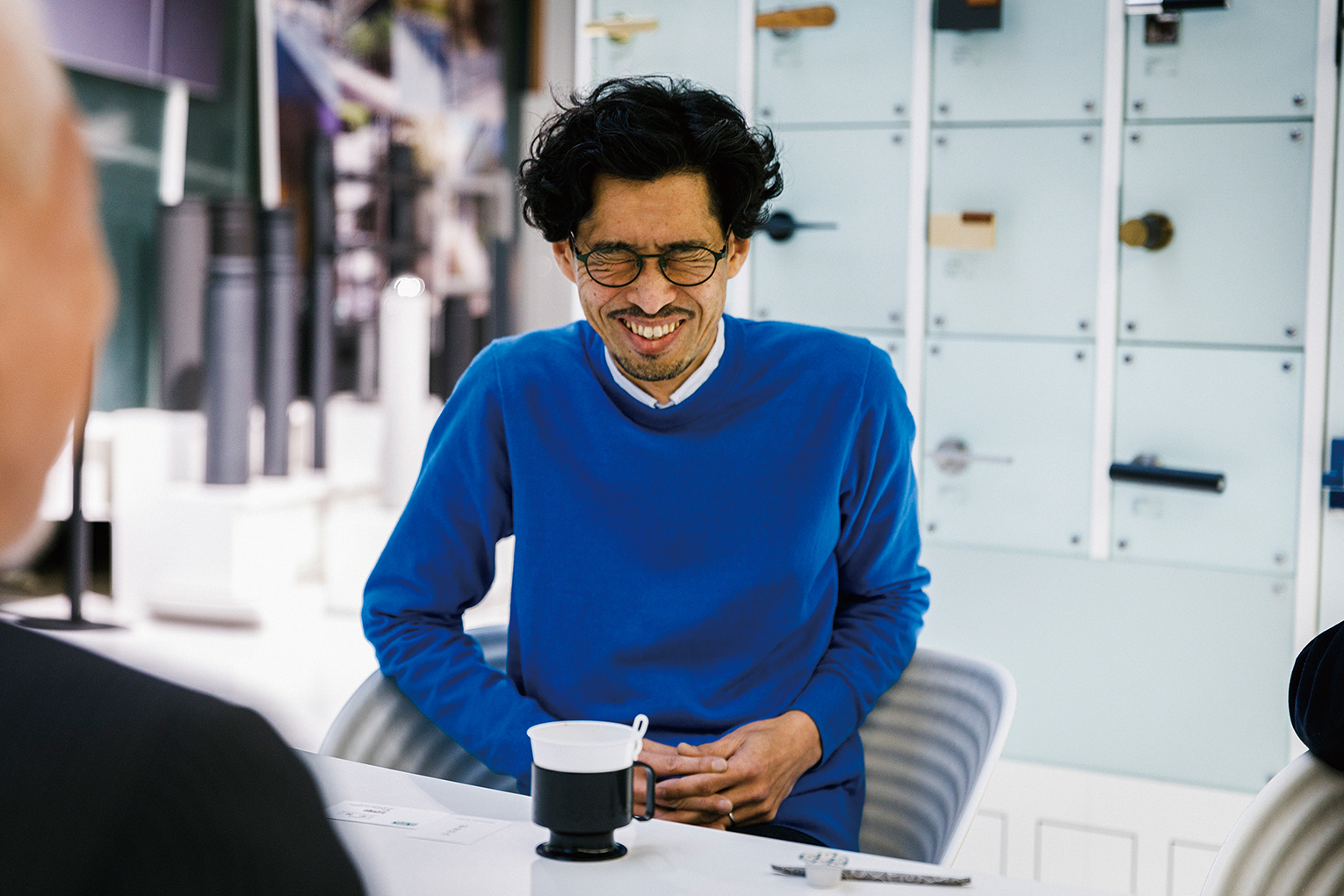
OOTA
I told him it’s okay to take your time until you find something you’re satisfied with. Once you’ve made something to your satisfaction, then let’s release it. That’s product design in a nutshell for me.
TATENO
So you spent quite a long time working on BAO BAO ISSEY MIYAKE?
MATSUMURA
Yes. Halfway through people found out I was secretly working on this project, and I did have to stop once as well. *Laughs.*
OOTA
*Laughs.* This is why you have to give designers ample time to lay out a solid foundation and create something truly exceptional and challenging. Otherwise, great things never take form.
TATENO
Mr. Ohta, for Cool Japan, you go around looking for really interesting and attractive places and things in Japan to introduce to the rest of the world, am I right?
OOTA
Of course, manga and anime are an important part of Japan, but Japan’s traditional crafts would be even more exceptional if we polished them up a little. That is what would really make Japan more “cool” to the rest of the world.
TATENO
Japan’s traditional crafts and technologies really are amazing, aren’t they?
OOTA
Yes, but the problem is the size and application of many of these things are specifically made for Japan. If we could bring these traditional crafts more in line with global standards, then I think they would really get some traction.
TATENO
True. Nambu ironware and Japanese lacquer are already popular among foreigners.
OOTA
I’ve spoken with a Nambu ironware artisan before, and he was saying that it’s great if you can make something of outstanding, unsurpassed quality. The problem is that a lot of low quality items are out in the world lowering the price of Nambu ironware for everyone.
TATENO
What makes it worse is the reason these items sell is because they are cheap.
OOTA
That’s right. Unlike with inferior products that have the color painted on them, we have traditional technologies that can add color using heat alone. We need to value this type of craftsmanship, assign a premium price to it, and sell it. There’s no point in selling an item to a person who doesn’t understand the value of it. You should only sell to people who recognize a product’s worth.
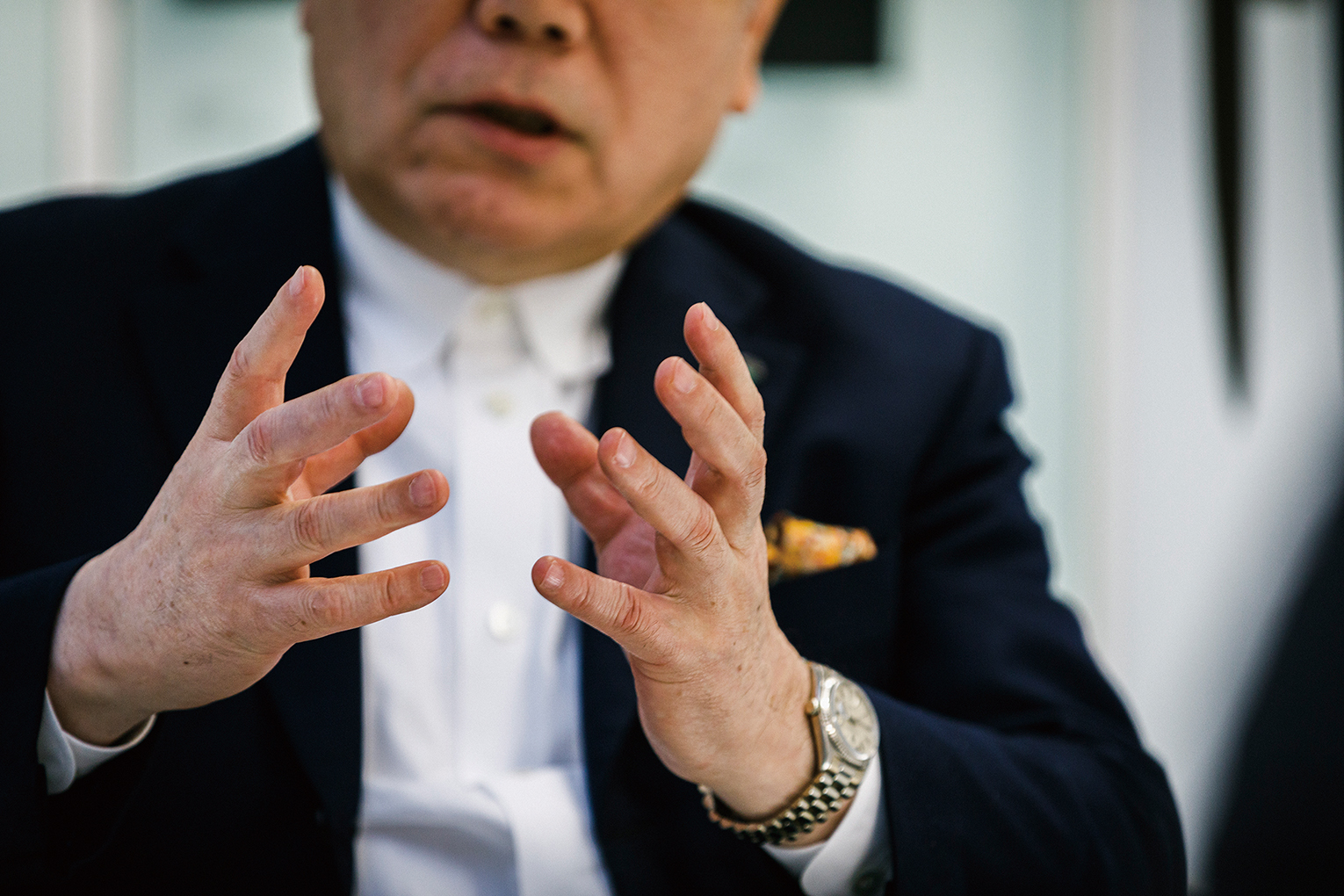
TATENO
Well said.
OOTA
Speaking of that, there is one incredibly skilled Nambu ironware artisan who was actually introduced to us by Hermes. It made me think that only a company like Hermes would be able to recognize talent such as his.
TATENO
That’s amazing. I, myself, have actually been thinking about designing a handle for Hermes and trying to sell it to them. At UNION, we have to find new ways to continue challenging ourselves.
OOTA
It would be really interesting to see President Tateno’s door handles adorning the shops of Hermes.
TATENO
Some of our products are already being used at Louis Vuitton shops. Japanese craftsmanship is becoming more and more recognized and accepted around the world.
OOTA
Is that right? There are still many technologies and crafts in Japan that remain unknown to the outside world.
TATENO
I really think Japanese craftsmanship and technology is truly superb. When you show the real thing to people overseas, they are always astonished.
OOTA
This must be the result of the uncompromising and indefatigable approach these artisans take to their craft. That’s why, for Cool Japan, we are trying to sell really cool Japanese products without lowering their price or value. There’s nothing cool about giving things away for cheap.
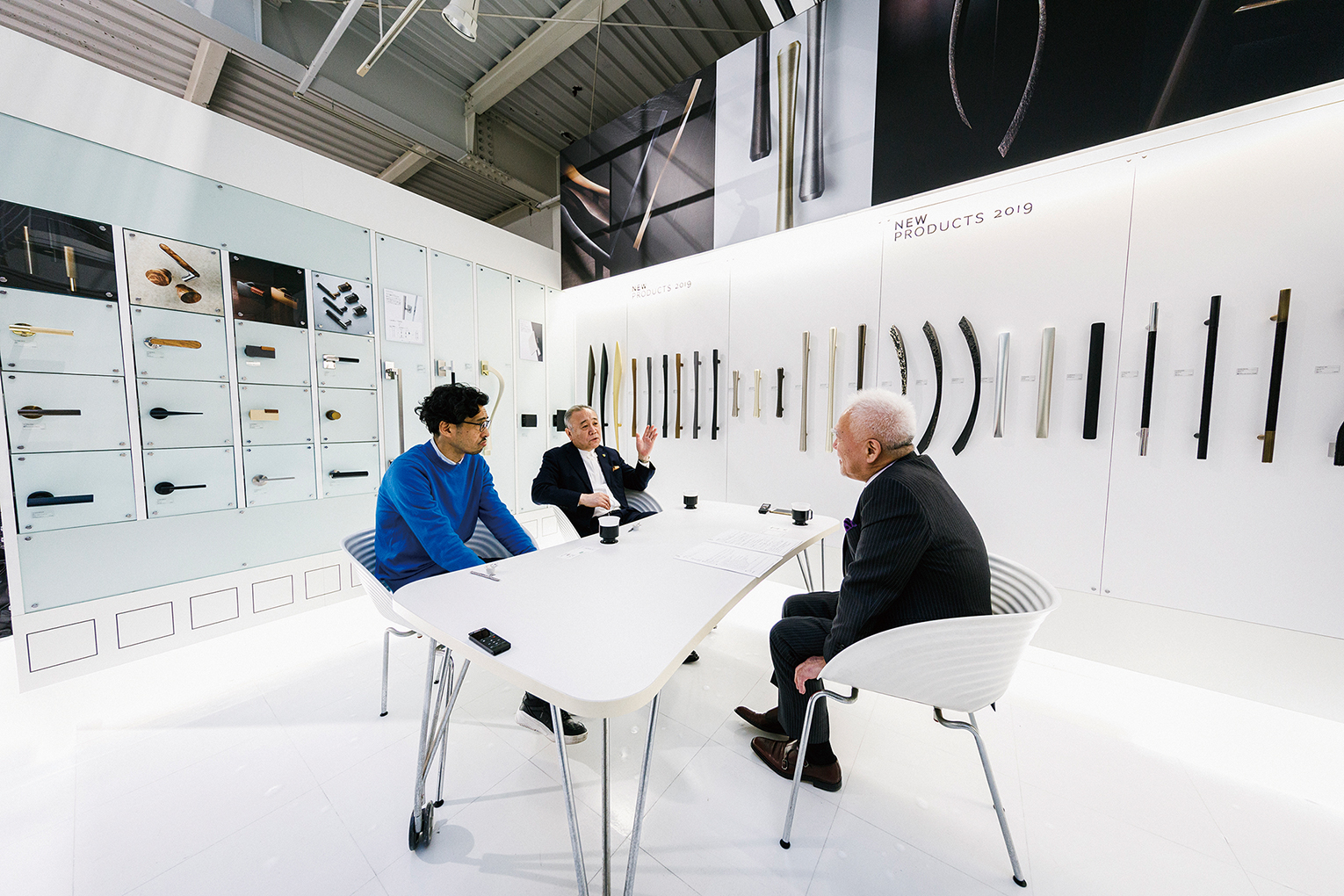
*Interview concludes*
Both
Thank you very much.
Planning: Naoyuki Miyamoto
Photography: Kesuke Kitaura
Writing: Fumiya Daito
Web Direction: Ryo Kijima